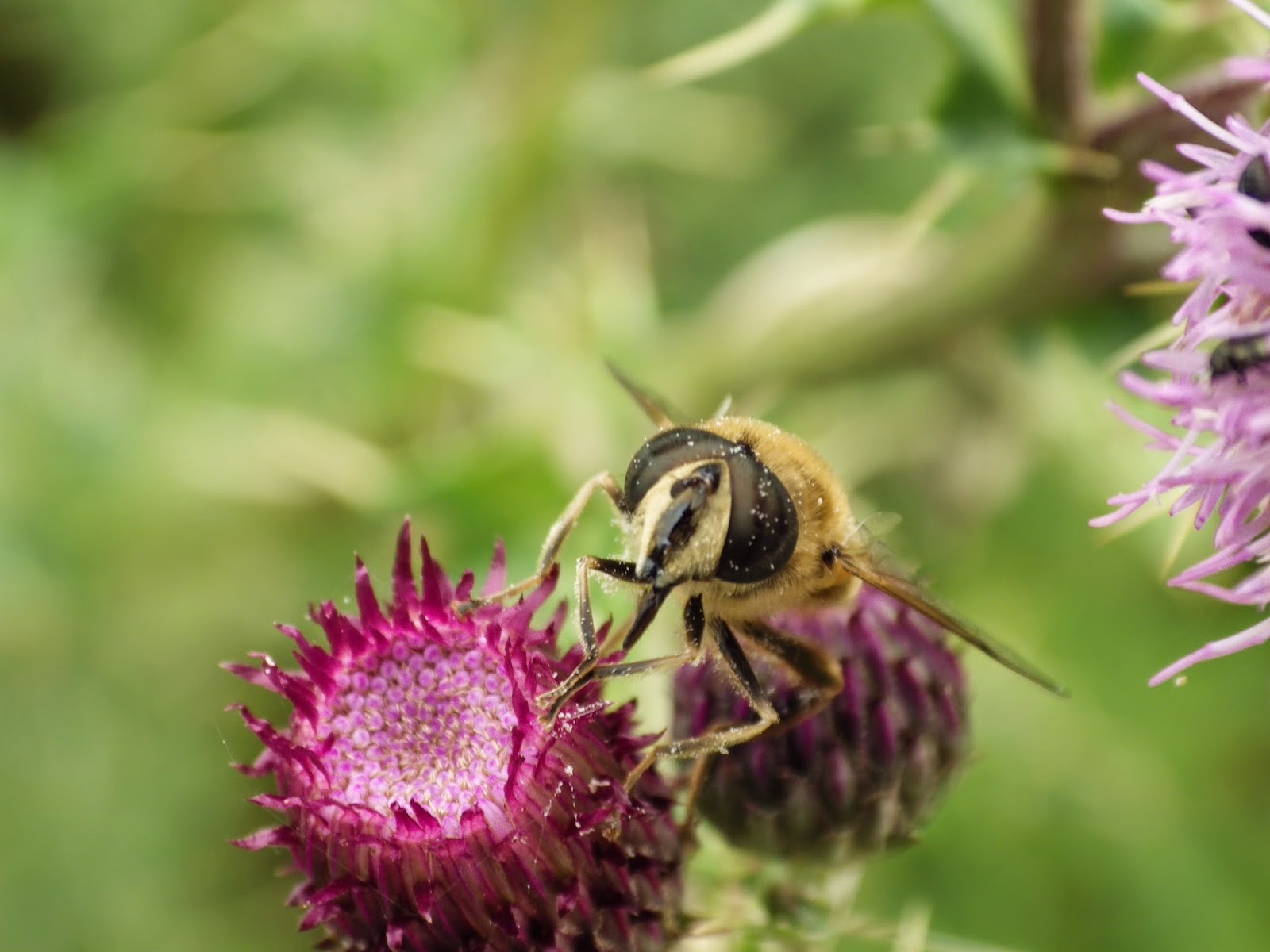As I write, the sweetcorn is still intact. I have however caught my first field mouse of the autumn in the polytunnel traps, plus two voles (short-tailed field voles to be precise). There was a single rat dropping in the polytunnel too and there is the familiar smell of rodents in the stables.
But on the whole it does not seem that we have suffered the sort of invasion which previous harvests have catalysed.
This morning is a beautiful morning and I'm off to see a Red-footed Falcon just up the road at Willow Tree Fen. Boris is coming along for his first ever birdwatching trip. Let's hope he behaves.
When I get back, I'll be planting up some of the plants I've raised this year and I'll be rotavating, for two days of significant rainfall have been welcome and have left the soil in perfect condition for planting, weeding and turning.
The veg garden is looking just about at its best now. The flower mixes are floribundant (no it's not a real word) and the grass is verdant. I even managed to mow it all before the rain came.
It is important to me not only that the veg plot is productive, but that it looks beautiful too and that it is a haven for wildlife, especially beneficial insects. I have plenty of space to produce more than enough to satisfy Sue and I, so devoting a few beds to easily grown flower mixes doesn't compromise anything.

The one drawback of attracting so many pollinators into the veg plot is that, just occasionally, our paths cross. Sue's bees can be a little tetchy at times, a little on the defensive side. They normally go straight for the head and end up tangled in your hair. There is then a choice to be made. Try to extract them risking a sting to the crown or to the hand, or hope that they get bored, manage to extricate themselves and fly off. The latter is not quite so easy to do in reality when you can feel a bee crawling on your head and hear its angry buzzing in your ears.

It wasn't helped by the fact that, two hours after the first suicide attack, the same happened again! Another sting on the same finger.
I posted my picture on Facebook and all my non-beekeeping friends were horrified. There was even talk of anaphylactic shock and epipens, which I considered an over-reaction to a fairly normal occurrence.
I seem to suffer a similar reaction to Sue. No real pain apart from the initial sting, but a delayed swelling which spreads and looks rather shocking. Oh, how could I forget the itching. Intense itchiness which comes and goes for no apparent reason. Indescribably itchy.
I decided to take to the interweb for advice. Not always a wise move when it comes to medical matters, but I just wanted to know if this swelling was indicative of an allergy to bee venom and if the next step could be anaphylactic shock. The interweb was unusually unhelpful, leading me round in circles and not really giving an answer. So I took to one of the beekeeping Facebook groups.
The comments I received from actual beekeepers were most helpful and put my mind at rest. It seems that many people have a similar reaction to bee stings. Although not the normal reaction, and probably indicative of some level of allergy, it is certainly not unusual either. It seems I am about as likely to suddenly stop breathing as anybody else. Unless symptoms change or get worse I have little to worry about. More than that, several people said that after a few more stings my body would probably get used to being stung and the reaction would die down.
So today I shall be doing some more planting and if I get stung I shall take consolation in the fact that it's probably part of my journey toward immunity... hopefully.
At least the swollen hand took my mind off the pain I was already suffering all down my arm after I foolishly tried to change the angle of descent of a branch which fell the wrong way when I was up a ladder dismantling a willow tree which had outgrown its allotted space... but that's another story. Let's just say that the heavy rain we've had has allowed me to find the chinks in the repairs I made to the gutters!

















